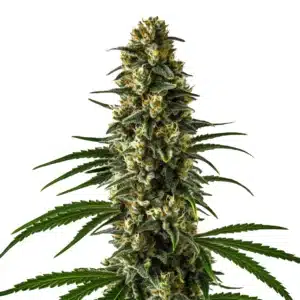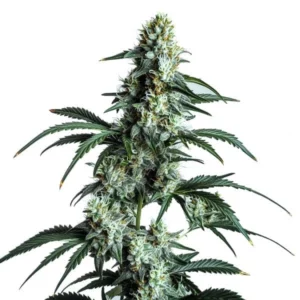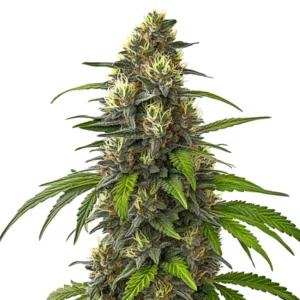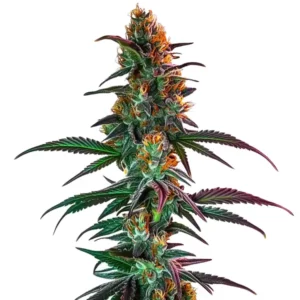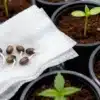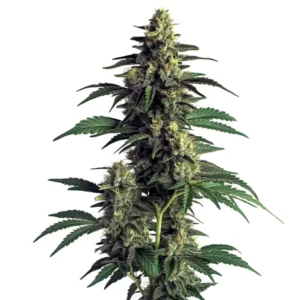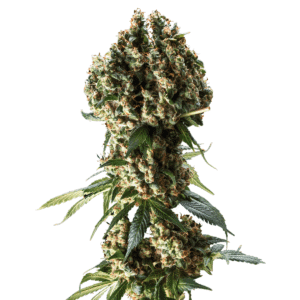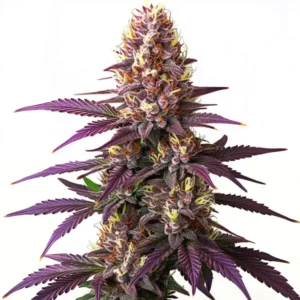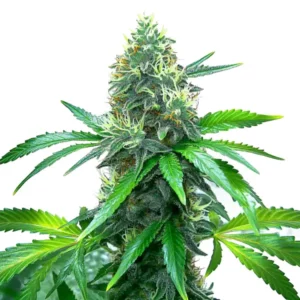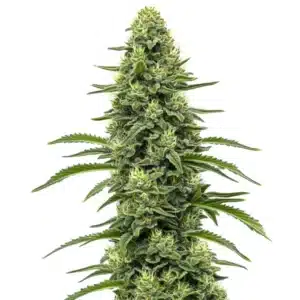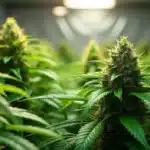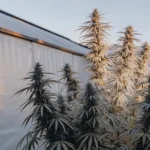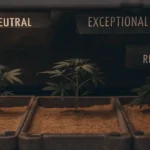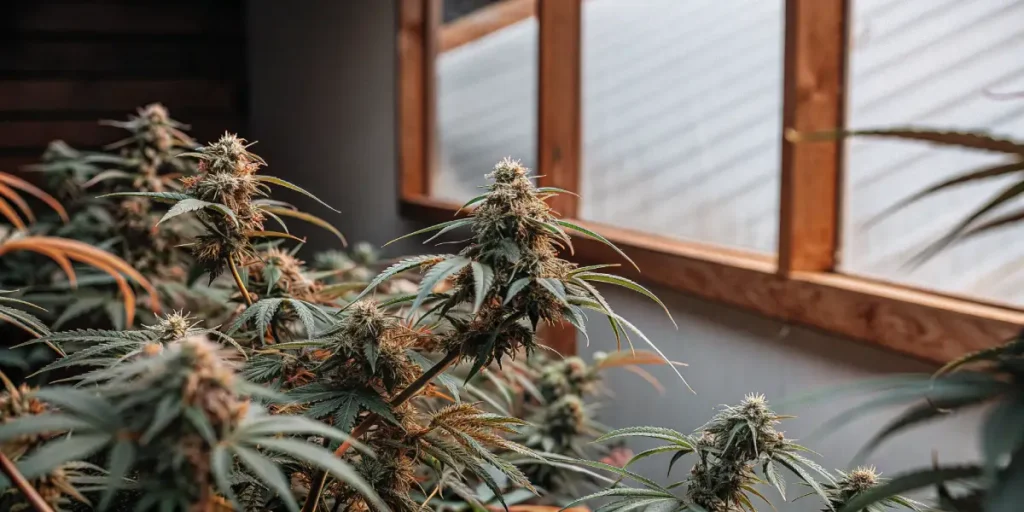
What Happens If You Don’t Prune Cannabis
Ever wondered what happens if you don’t prune cannabis? It’s more than just letting your plant grow naturally. Pruning is like giving your cannabis a haircut, shaping it for better yields. Skipping this step can lead to some unexpected results.
Imagine a thick jungle of leaves. Without pruning, cannabis plants can become unruly. They may look lush but the dense canopy can block light from reaching lower buds. This can lead to smaller yields and less potent flowers. It’s like putting all your eggs in one basket, but the basket is hidden in the shade.
Recommended Strains
Girl Scout Cookies
|
|
THC | 18% - 25% (Medium) |
|
|
Type | Feminized |
|
|
Yield | High |
|
|
Phenotype | 60% Indica / 40% Sativa |
Sour Diesel
|
|
THC | 22% - 25% (Medium) |
|
|
Type | Feminized |
|
|
Yield | High |
|
|
Phenotype | 30% Indica / 70% Sativa |
For first-time growers, the idea of cutting your plant might be daunting. However, understanding the consequences of not pruning cannabis plants is crucial. It helps in making informed decisions about your cultivation practices. Let’s dive into the effects of skipping cannabis pruning and how it impacts your harvest.
Consequences of Not Pruning Cannabis Plants
When cannabis plants aren’t pruned, they tend to grow tall and bushy. This sounds good until you realize that the light can’t penetrate the thick canopy. This lack of light affects the lower branches which struggle to develop quality buds.
In practical terms, this means that your top colas might be impressive, but the rest of the plant suffers. The lower buds, often called popcorn buds, are small and lack potency. The outcomes of cannabis plants without pruning are less than ideal if you’re aiming for maximum yield and quality.
The consequences of not pruning cannabis plants extend beyond just yield and potency. Over time, the plant’s structure can become a tangled mess, making it difficult to manage and harvest. This can lead to increased labor and time spent on maintenance, detracting from the overall efficiency of your grow operation.
Furthermore, unpruned plants can become more susceptible to environmental stressors. Without regular pruning to manage the plant’s shape and size, they may struggle to cope with wind or heavy rain, increasing the risk of physical damage. By understanding what happens if you don’t prune cannabis, growers can take steps to ensure their plants remain healthy and productive.
Impact of Neglecting Cannabis Pruning
Neglecting pruning can lead to poor air circulation. Without enough airflow, your plants are more susceptible to mold and pests. Imagine a humid jungle where mold loves to thrive. That’s what happens when there’s no space for air to move around the dense foliage.
Another impact of neglecting cannabis pruning is the wastage of nutrients. All that energy going into supporting extra leaves could be better used for bud production. By not pruning, you’re spreading your plant’s resources thin, which can result in weaker plants.
Moreover, neglecting cannabis pruning can contribute to uneven growth patterns. As the plant’s resources are spread too thinly, some branches may dominate while others languish, leading to a lopsided appearance. This imbalance can further stress the plant, making it harder to achieve uniform bud development.
Additionally, the effects of skipping cannabis pruning can be felt during the crucial flowering stage. Understanding what happens if you don’t prune cannabis is essential, as the plant may allocate too much energy to non-productive parts, resulting in buds that are airy and lack density. Knowing this full impact helps growers optimize their cultivation process for the best results.
Results of Unpruned Cannabis Growth
Unpruned cannabis growth can affect the plant’s overall health. Overcrowded branches can break under their own weight, especially during flowering. This can cause stress to the plant, affecting its ability to produce quality buds.
The results of unpruned cannabis growth also include the risk of developing hermaphrodite traits. Stress from overcrowding can trigger some plants to produce both male and female flowers. This is something every grower wants to avoid, as it leads to seedy buds.
Unpruned cannabis growth can also result in a phenomenon known as “self-shading,” where the plant’s own leaves block sunlight from reaching lower branches. This lack of light can severely hinder photosynthesis in those areas, stunting growth and reducing overall yield. In fact, what happens if you don’t prune cannabis is that energy gets wasted on unnecessary foliage instead of being directed toward bud production.
Furthermore, the results of unpruned cannabis growth can manifest in the form of increased susceptibility to nutrient deficiencies. As the plant struggles to support excessive foliage, it may deplete soil nutrients more rapidly, requiring more frequent feeding and careful monitoring by the grower.
Promos & Deals
Practical Examples and Strains
Let’s take a closer look at how pruning affects different cannabis strains. For instance, the Girl Scout Cookies strain from Blimburn Seeds. This strain is a favorite for its balanced high and sweet aroma. When pruned correctly, it produces dense, resinous buds.
If you skip pruning, Girl Scout Cookies may develop more leaves than flowers. The dense foliage can overshadow the buds, reducing their quality and size. This clearly shows what happens if you don’t prune cannabis, as airflow and light penetration decrease, leading to weaker yields.
Another example is the famous Sour Diesel strain, known for its energizing effects and pungent aroma. Without pruning, Sour Diesel plants can grow excessively tall and bushy, making it challenging to manage and potentially reducing light penetration to lower branches.
In contrast, strains like Northern Lights often have a more compact growth pattern, but even these benefit from strategic pruning. By removing excess leaves and branches, growers can ensure that energy is focused on producing high-quality buds, demonstrating the outcomes of cannabis plants without pruning.
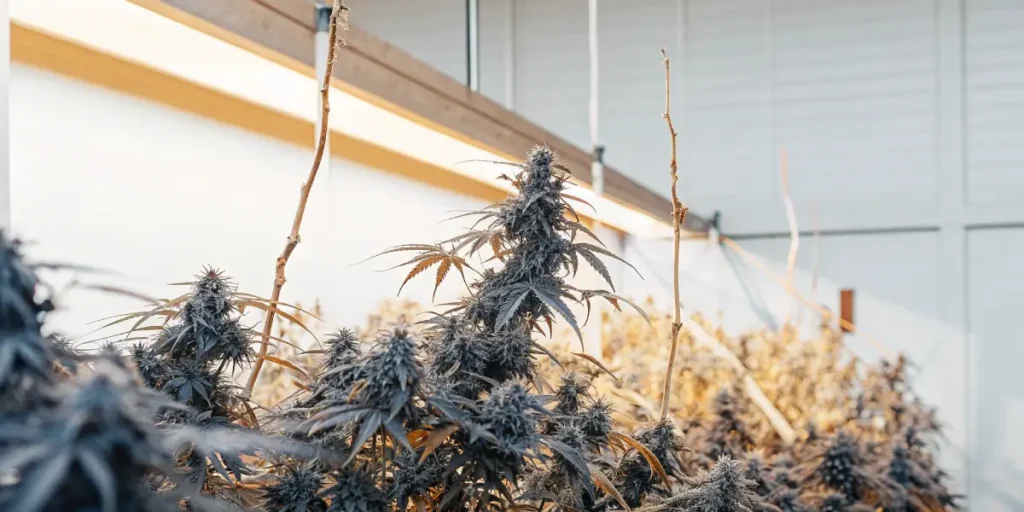
Outcomes of Cannabis Plants Without Pruning
The outcomes of cannabis plants without pruning are clear when you consider the overall growth. A plant left to grow naturally might appear healthy but the end product tells a different story. Sparse, airy buds are often the result of a lack of pruning.
Pruning isn’t just about cutting away; it’s about directing growth. By removing unnecessary branches, you allow the plant to focus its energy on producing quality buds. Without this guidance, plants can become unruly and less productive.
Moreover, the outcomes of cannabis plants without pruning can include a greater risk of pest infestations. Dense foliage can create a haven for insects, making it difficult to spot and manage pest problems before they escalate. Proper pruning reduces these risks by improving visibility and access to all parts of the plant.
Finally, the lack of pruning can lead to difficulties during harvest time. An overgrown plant can be cumbersome to trim, increasing labor time and reducing efficiency. Knowing what happens if you don’t prune cannabis is crucial for planning a successful and manageable harvest.
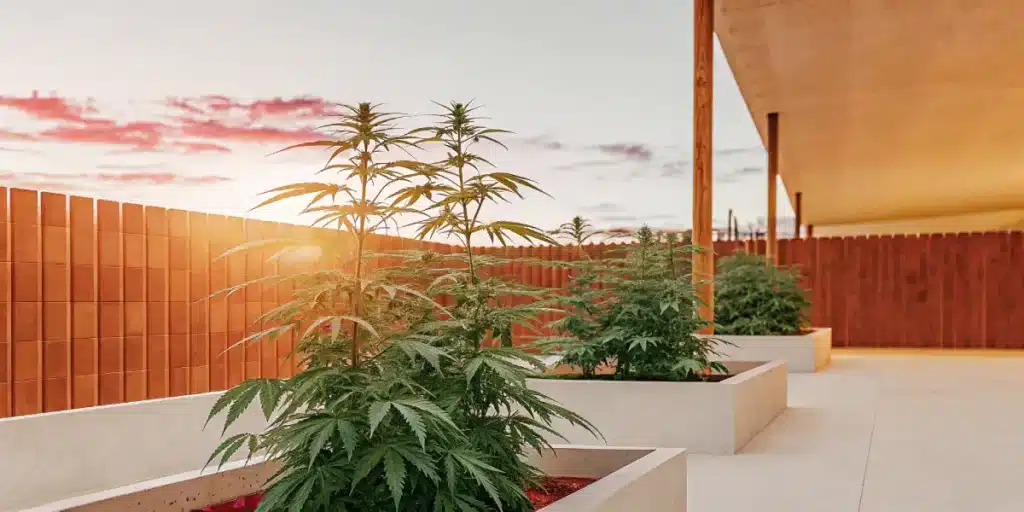
FAQs about what happens if you don’t prune cannabis
Is pruning really necessary for all cannabis plants?
While not absolutely necessary, pruning is highly recommended for most cannabis plants. It helps in managing plant structure and maximizing light exposure, which in turn enhances bud development and yield. Some growers might skip pruning with strains that naturally grow sparsely, but these are exceptions rather than the rule. However, it’s important to understand what happens if you don’t prune cannabis: plants often become bushy, airflow is reduced, and lower buds may receive less light, resulting in smaller yields and a higher risk of mold.
Even in cases where pruning is less critical, it still provides benefits such as improved air circulation and reduced risk of mold. For those growing strains like Granddaddy Purple, which naturally have denser foliage, pruning becomes even more crucial to ensure the best possible outcome.
It’s important to note that the necessity of pruning can vary depending on the cultivation method and environment. For example, indoor growers may find pruning more essential to manage space constraints and optimize light distribution, while outdoor growers might have more flexibility with plant size.
Ultimately, knowing the consequences of not pruning cannabis plants is key to making informed decisions about whether to prune. By evaluating the specific needs and characteristics of each strain, growers can determine the best approach to maximize yield and quality.
Can I prune during the flowering stage?
It’s generally advised to avoid heavy pruning during the flowering stage. At this point, the plant is focusing on bud production, and significant pruning can stress the plant. Minor adjustments like removing dead leaves can be beneficial, but major cuts should be done during the vegetative stage.
However, some growers perform a technique called “lollipopping,” which involves removing lower growth to focus energy on the top buds. This should be done with care, as it can affect the plant if done improperly.
Pruning during the flowering stage requires a delicate balance, as excessive cuts can disrupt the plant’s hormonal balance and potentially delay flowering. If you’re considering pruning at this stage, it’s crucial to assess the plant’s overall health and growth before proceeding.
While techniques like defoliation can be applied during flowering, they should be approached with caution. The impact of neglecting cannabis pruning during earlier stages might necessitate more intervention during flowering, but this should be done with a clear understanding of potential risks and benefits.
What tools do I need for pruning cannabis?
The right tools make a big difference in pruning cannabis plants. A good pair of sharp scissors or pruning shears is essential. These will give you clean cuts, reducing the risk of damaging the plant or introducing diseases.
Sanitizing your tools before use is also crucial to prevent the spread of potential pathogens. With the right equipment, you can prune effectively, maintaining the health and productivity of your plants.
Besides to scissors and shears, some growers find it helpful to use gloves for better grip and protection while pruning. This can be especially useful when dealing with sticky resinous strains like Gorilla Glue 4.
It’s also wise to have a dedicated space or container for collecting plant material during pruning. This helps keep your growing area tidy and reduces the risk of accidentally damaging healthy parts of the plant. Proper preparation with the right tools ensures that the effects of skipping cannabis pruning are avoided.
How often should I prune my cannabis plants?
The frequency of pruning depends on the plant’s growth stage and the specific strain. During the vegetative stage, regular pruning every couple of weeks helps shape the plant and remove excess foliage. This ensures light reaches all parts of the plant, promoting even growth.
As the plant transitions into flowering, the need for pruning decreases. Focus shifts to maintaining plant health rather than reshaping. For strains like Bruce Banner #3, which can grow vigorously, regular pruning is key to managing its size.
Monitoring your plant’s growth is essential to determine the ideal pruning schedule. Some strains may require more frequent attention, while others may grow more steadily, necessitating less intervention. Observing the plant’s response to pruning can guide adjustments in frequency.
Ultimately, the outcomes of cannabis plants without pruning underscore the importance of finding a balance. Adjusting your pruning routine based on strain characteristics and environmental factors can help optimize plant health and maximize yield.
What are the risks of over-pruning?
Over-pruning can stress cannabis plants, leading to stunted growth or reduced yields. Removing too much foliage at once can shock the plant, affecting its ability to photosynthesize and produce energy. This can result in delayed flowering or reduced bud production.
To avoid over-pruning, focus on gradual trimming over time. This allows the plant to recover and continue growing without significant stress. Paying attention to the plant’s response to pruning will guide you in making the right cuts.
Another risk of over-pruning is the potential for creating an imbalance between root mass and foliage. This can lead to nutrient uptake issues, as the plant may struggle to absorb and distribute nutrients effectively without adequate leaf surface area.
Knowing the consequences of not pruning cannabis plants and avoiding over-pruning requires a nuanced approach. Striking the right balance ensures that your cannabis plants remain healthy, productive, and capable of reaching their full potential.


